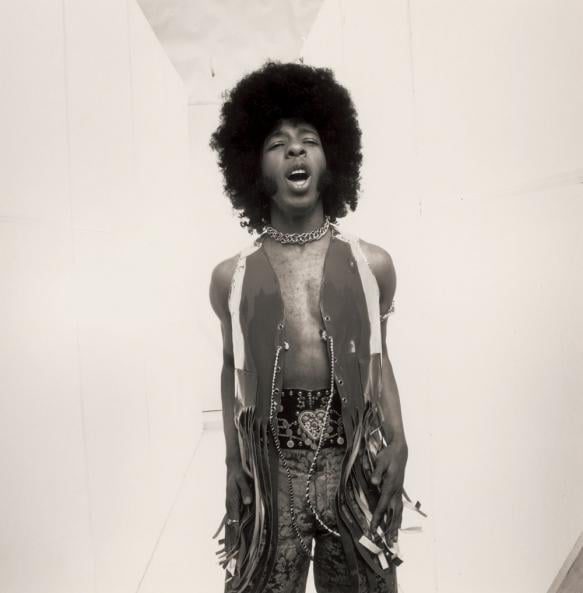Sly Stone, the pioneering frontman of Sly and the Family Stone, passed away on June 9 at the age of 82. A rare talent who redefined funk, soul, and pop in just a few years, Stone’s legacy lives on—nowhere more vividly than in New York, where his presence, though fleeting, was unforgettable.

The family shared that after a prolonged illness, Stone passed peacefully, surrounded by loved ones. They celebrated his monumental impact on pop, funk, and rock, highlighting how his groundbreaking music continues to inspire generations. In recent years, Stone completed a screenplay about his life, a project that promises to reveal more of his story in the future.
New York played a significant role in Stone’s legacy, hosting some of his most memorable performances and media appearances that captured his electrifying artistry. While born in Texas and raised in California, Stone’s connection to New York runs deep, from legendary live shows in the city to landmark festival performances in the region.
One of the most iconic moments came in 1969 at Woodstock, just a few hours north of New York City. The festival was a cultural epicenter for New York’s music scene and a defining moment in American rock history. The Family Stone’s explosive set, immortalized in film and audio, featured classics like “I Want to Take You Higher” and “Dance to the Music,” showcasing their genre-defying blend of funk, soul, and psychedelic rock. The Woodstock performance remains a high point of Stone’s career and a cornerstone of New York’s vibrant musical heritage, embodying the spirit of a generation.
Back in New York City, Stone’s 1971 appearance on The Dick Cavett Show remains a standout. The band’s raw, electric performance of “I Want to Take You Higher” was a testament to their unmatched energy and innovation. The following interview offered a rare glimpse into Stone’s complex personality—enigmatic, charismatic, and sometimes cryptic. This appearance helped cement this legend in New York’s rich television and musical history.
Over a decade later, Stone returned to New York television on Late Night with David Letterman in 1983, performing “If You Want Me to Stay.” This performance, taped at NBC Studios in Manhattan, showed a more polished yet still deeply grooving side of Stone. The brief interview, full of his trademark humor and mystique, further endeared him to New York audiences. These rare televised moments remain integral chapters of Stone’s New York story.
Stone’s time in New York included appearances at major venues like Harlem’s Apollo Theater and the Schaefer Music Festival in Central Park. The Apollo, with its deep legacy in Black American music, was a fitting stage for Sly and the Family Stone, whose fusion of funk, soul, and psychedelia broke new ground in the late 1960s and early ’70s. The Schaefer Music Festival, held at Wollman Rink, was a fixture of New York summers—an outdoor series known for its eclectic lineups and wide-open crowds. Both the Apollo and Schaefer offered the kind of high-profile, high-energy settings where Sly’s music thrived. Even without extensive documentation, the memory of his presence in these spaces remains part of New York’s rich live music history.
Beyond live performances, Stone’s influence permeated New York’s broader musical culture. His grooves and bass lines were sampled extensively by hip-hop DJs throughout the city and state, becoming foundational elements of a new musical era. Underground clubs and record collectors kept his spirit alive, rediscovering his work through vinyl and digital platforms. New York not only hosted Stone but became a place where his legacy evolved and flourished long after his last public appearances.
Though Stone’s career was brief and sometimes elusive, his connection to New York was profound. He didn’t perform in the state often, but when he did, it was always unforgettable. From Woodstock’s sprawling fields to Harlem’s iconic stage, from Central Park’s summer festivals to New York’s television studios, Sly Stone’s presence left an indelible mark.
New York remembers him not just as a musician but as a transformative force whose spirit continues to resonate through the state’s rich musical landscape.
→ Continue reading at NYS Music
